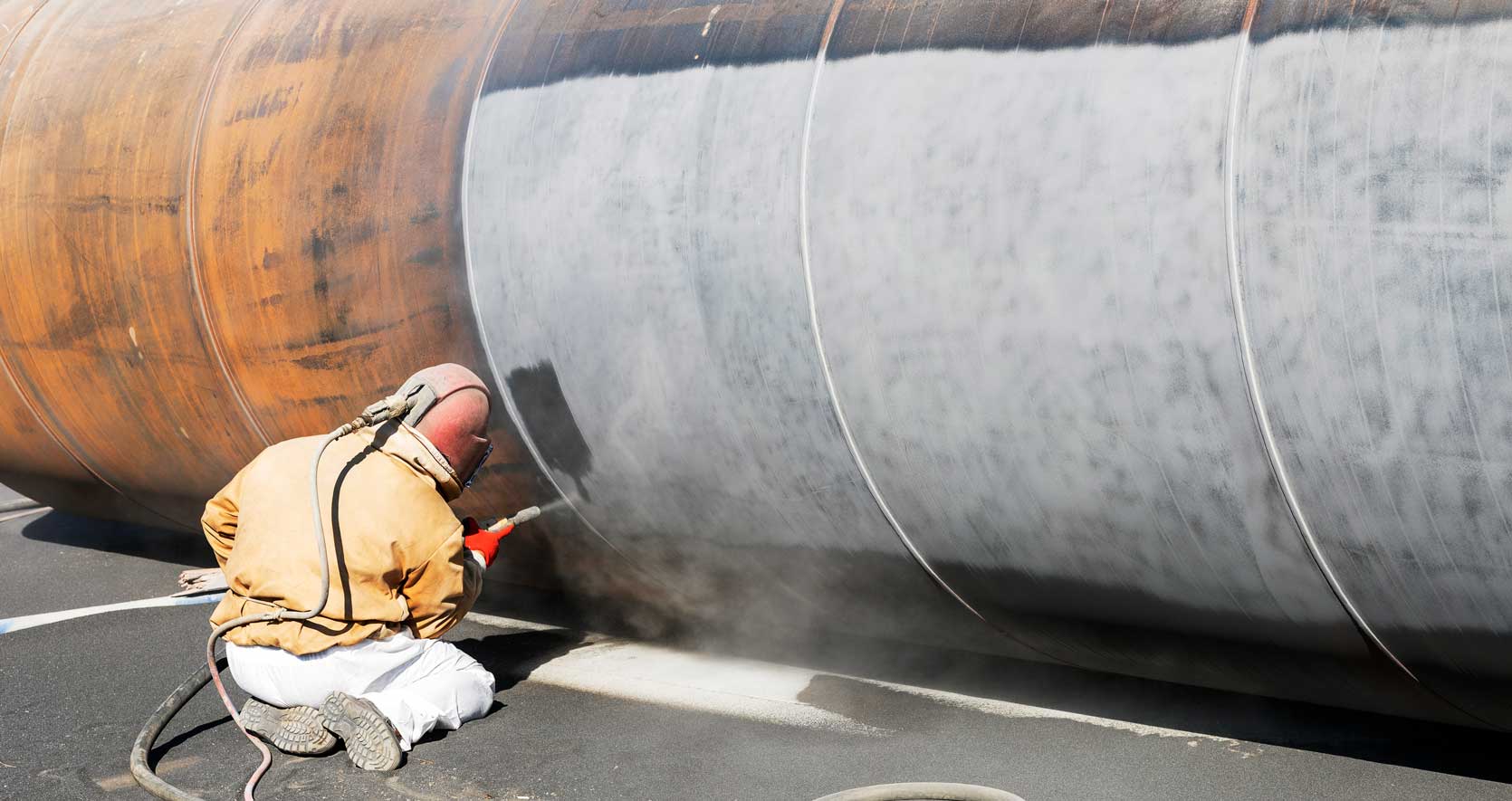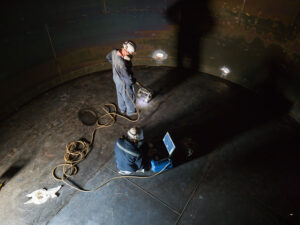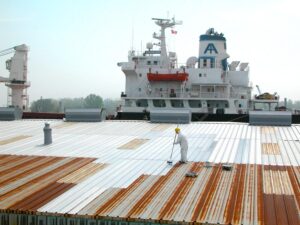Abrasive blasting, often mistakenly called sandblasting, is a crucial preparatory procedure that precedes painting in many industrial applications. It is designed to treat and condition surfaces, ensuring the best possible adherence to paints or coatings. Today, with technological advancements, the industry has evolved beyond traditional sandblasting techniques, adopting more efficient, environmentally friendly, and safe methods. Let’s delve into some of these current abrasive blasting methods widely adopted by industrial painting companies today.
- Wet Abrasive Blasting: Wet abrasive blasting is a variant of the conventional dry sandblasting technique that includes water. By introducing water, the dust produced during blasting is significantly reduced, making the process safer and cleaner. The water also cools the treated surface, reducing the risk of warping due to heat, especially when dealing with metals.
- Vacuum Blasting: Vacuum blasting, also known as dustless blasting, is an environmentally friendly blasting method. It incorporates a vacuum system alongside the blast pot. As the surface is blasted, the abrasive material and the removed contaminants are sucked up by the vacuum, leaving the surroundings clean. This method is highly preferred in environments where dust and other particulates can be hazardous or are strictly regulated.
- Sponge Blasting: Sponge blasting utilizes sponge media impregnated with various abrasives. As the sponge hits the surface, it flattens and exposes the abrasive, effectively removing the surface contaminant. On the rebound, the sponge expands, capturing and reducing the spread of dust. Sponge blasting is ideal for situations where dust and rebound must be minimized. It offers the additional advantage of being recyclable, contributing to waste reduction.
- Dry-Ice Blasting: Dry-ice blasting uses small pellets of dry ice (solid CO2) projected at high speed to clean surfaces. When dry ice hits the surface, it instantly sublimates into gas, expanding rapidly and helping to remove the surface contaminant. This method produces no secondary waste and is non-abrasive, perfect for delicate surfaces.
- Bead Blasting: Bead blasting is a technique that uses glass beads as the abrasive media. This method is commonly employed when the aim is to give the material a smooth finish. Bead blasting is often used for decorative purposes on metals and is frequently used in auto restoration.
- Automated and Robotic Blasting: Automation has reached the blasting industry in the digital transformation era. Automated and robotic blasting systems have started gaining traction. These systems offer advantages like precision, consistency, and speed over traditional blasting methods. They also contribute to enhanced worker safety by performing in hazardous environments.
- EcoQuip Vapor Abrasive Blasting: The EcoQuip system, developed by Graco, combines water, abrasive, and air pressure for effective blasting. This method significantly reduces airborne dust and uses less abrasive than dry blasting, leading to a safer work environment and less waste.
In conclusion, the landscape of abrasive blasting in industrial painting applications has been evolving steadily, integrating more sustainable and efficient methods. By reducing dust, waste, and environmental impact, these innovative methods meet the industry’s demand for effective surface preparation while upholding the growing emphasis on occupational health and environmental responsibility. As technological advancements permeate the sector, we anticipate further improvements and breakthroughs in abrasive blasting techniques.





